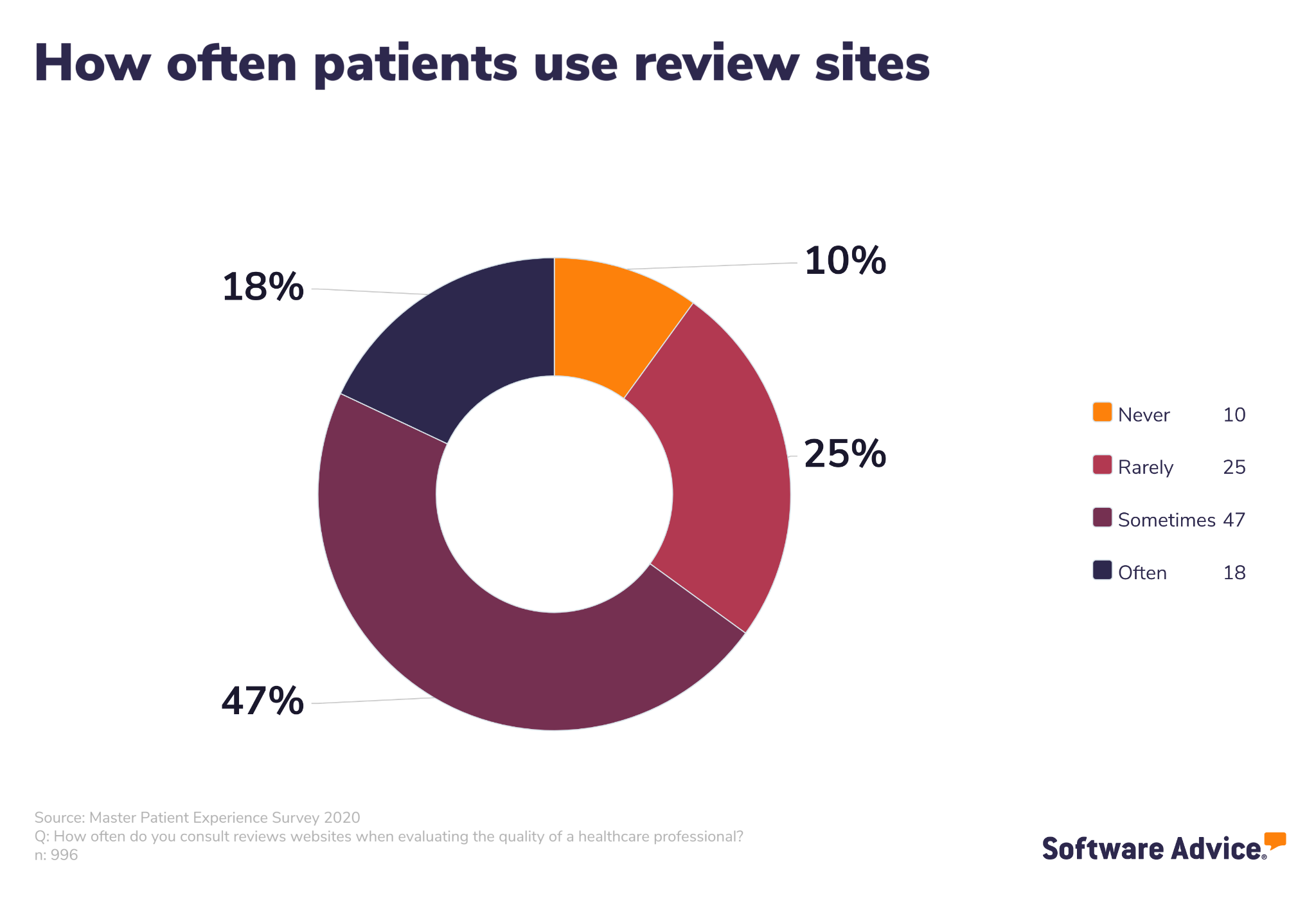[*]
Patient engagement is the branch of patient experience and patient satisfaction that focuses on making sure patients and providers work together in tandem to increase health outcomes.
Having a robust patient engagement strategy ensures that patients will be actively engaged in their own health by gathering information and making decisions about their symptoms, illnesses, and treatment options. In order to help patients achieve this level of engagement, you need to empower your patients to have a voice in their own healthcare experience.
If your practice does not focus on patient engagement, you risk losing patients to other practices, lowering your practice’s overall reputation, and providing your patients with a more costly healthcare experience. If you’re reading this, chances are you’re stumped on how patient engagement can improve your practice, so we’re here to help clarify a few things while giving some tips about how to start.
A small healthcare provider who invests time in focusing on improving their patient engagement strategies will see a variety of benefits:
What is a patient engagement strategy?
First, it’s important to understand what a patient engagement strategy is. A patient engagement strategy is the program your practice implements which includes the various different ways you engage your patients.
Some examples of a patient engagement strategy include making scheduling easier, connecting with patients through their preferred channels (email, text, phone), staying engaged throughout the entire care process, including aftercare, and practicing shared decision-making with your patients.
Your patient engagement strategy is going to be different from other practices because your patient population is different. Before you develop your strategy, you’ll need to understand why it’s important to begin with. That’s where these benefits come in.
Curious to learn about patient engagement software? Check out our Buyers Guide to understand its functionality and benefits.
Benefit #1: Patients will see improved health outcomes once they engage
When patient engagement strategies work, they improve health outcomes by helping patients learn to take control over their own health, whether it’s physical health or mental health. For example, a patient who’s engaged with their patient care plan is more likely to take their medications as prescribed as well as self-manage their temporary or chronic condition, resulting in fewer complications overall.
This means less repeat visits with you and fewer emergency admissions to the hospital. A robust patient engagement strategy is a key part of the value based care health model because improving patient health outcomes and reducing visits is one of the key metrics of a successful practice that focuses on value based care.
In addition to the lack of hospitalizations, engaged patients are patients who will have increased preventative behaviors. They will come in for more regular checkups, mammograms, STI/STD screenings, and will be more likely to commit to healthy behaviors like nutritious eating or exercise plans.
Patients who engage with their health and care about their short and long term health outcomes will be more likely to identify if something is wrong, leading to a faster diagnosis. This can result in a prognosis that can be less costly for the patient and the health system because they can begin treatment more quickly and, potentially, before the disease has a chance to advance.
When engaged patients receive a tough diagnosis, they’re more likely to understand their condition and treatment plan which can increase the treatment’s success rate.
Pro tip
To help patients feel more engaged, shift your focus from clinical diagnosis to discussing a patients’ overall health. You’d be shocked how effective simply asking a patient “What matters most to you when it comes to your overall health?” is.
Once you redirect the focus away from clinical symptoms and toward overall health outcomes, the provider-patient relationship becomes more like a partnership than a one-way street where a patient has no control over their own health.
Benefit #2: Patients spend less money on their care when they’re engaged and educated
Your practice is under more pressure than ever to control the cost of patient care and to deliver value. Not only is it important to reduce the cost of care for your patients for their health outcomes, it’s also important for your practice’s reputation.
You’re more likely to get recommendations from your patients or positive online reviews if your patients feel like they’re getting a good value. According to our survey [*], almost two thirds (65%) of patients use online reviews as the very first step to finding a new doctor, so your online reputation is often the first impression you make on many potential patients.

Additionally, using effective patient engagement strategies like telehealth and remote patient monitoring improves patient outcomes which decreases readmission, emergency room visits, and overall usage of the health system. These improved outcomes decrease cost for your patients because they aren’t having to engage with expensive, preventative health costs.
When healthcare costs are affordable, more of your patients can access the quality patient care they deserve which means they’re more likely to address chronic health issues earlier on. An engaged patient isn’t going to “wait to see if it goes away on its own.”
Pro tip
Your patients are never going to see these reduced patient care costs unless they are educated, and that falls on you as the care provider. That’s why patient education is so important. You need to first understand your patients’ health literacy about their condition. Once you understand that, you can work together to create meaningful goals.
Additionally, when you incorporate new tools into the health care plan, like remote patient monitoring devices, it’s absolutely crucial to educate your patients on their use and importance early and often. If your patients don’t know how to use the device or understand how software is important, they are never going to use it, and, therefore, will be less engaged.
Benefit #3: Your practice will make more money
Americans spend, on average, over $12,000 annually on healthcare [1], so losing patients can lead to large losses of revenue. Additionally, the cost to acquire new patients is often much higher than the cost of retaining current patients, so it’s important to keep patients engaged.
The sad reality for many of your patients is that they view healthcare as transactional more than they view it as something they should consistently engage with during their everyday lives. Whether it’s from bad experiences in the past, or their own misconceptions, patients can view doctors as prescription machines who are impartial about them because they’ve never had a good relationship with the health system.
When you actually invest in your patients’ health by providing access to information, options, and direct patient care plans, your patients will become more willing to invest their own time too. Apathy is harder whenever a patient feels invested.
An engaged patient knows that each visit with you is important and not superfluous. They understand that their voices can be heard. A more engaged patient is one that uses their patient portal, scheduling software, electronic medical records, and other technology that you’ve invested time and money into getting up and running.
This increased engagement with the technology means that key details won’t fall through the cracks. Information is easily updated, accessed, and communicated between nurses, patients, and doctors.
Pro tip
Train your staff on the technology you have invested time and money into. Train and educate your patients on how to use the patient portal so they have consistent access to their own health information. If you don’t utilize technology in your patient engagement strategy, you should seriously consider it because you’re losing a competitive edge, and, most likely, patients to other practices who are utilizing technology.
Improved patient engagement means an improved healthcare system
Increasing your patient engagement strategy is one of the fastest ways to improve your practice. Once your patients are actively engaged in their direct patient care, they’ll be more likely to see positive health outcomes and will save money by being healthier.
Additionally, your practice will make more money because your patients won’t leave for another healthcare organization and will be more likely to leave positive reviews and increase word of mouth referrals.

A robust patient engagement strategy is just the start to a more successful practice because it’s just one piece of a larger puzzle.
Survey methodology
* Software Advice’s 2020 Master Patient Experience Survey surveyed over 1,000 patients in the United States. We used screening questions to narrow the number of respondents down to 990 with relevant histories and experiences. We worded the questions to ensure that each respondent fully understood their meaning and the topic at hand.
Sources
- National Health Expenditure Data, Centers for Medicare and Medicaid Services
[*]Source link
[adsanity_group align=’alignnone’ num_ads=1 num_columns=1 group_ids=’15192′]
Need Any Technology Assistance? Call Pursho @ 0731-6725516




